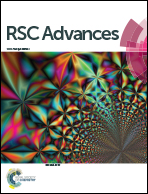The construction of the novel magnetic prodrug Fe3O4@DOX and its antagonistic effects on hepatocarcinoma with low toxicity
Abstract
Doxorubicin (DOX) is widely used as a chemotherapeutic agent for liver cancer. However, its clinical applications are greatly restricted by its nonselective cytotoxicity. A novel magnetic prodrug, Fe3O4@DOX, was designed, synthesized and characterized, and Fe3O4 and DOX were connected by the peptide CGGAAN. The magnetic prodrug Fe3O4@DOX was successfully synthesized with average sizes of 95 nm and 322.5 nm by TEM (transmission electron microscopy) and Malvern Zetasizer instrument respectively. The maximum emission wavelength shifted from 594 nm for free DOX to 615 nm for conjugated DOX in the synthesized Fe3O4@DOX. Both free DOX and Fe3O4@DOX show strong cytotoxicity to legumain overexpressing PLC through apoptosis. Similarly, Fe3O4@DOX and DOX equally reduced tumor volume and induced cell apoptosis in tumor tissues, while the former significantly maintained body weight and extended the life of nude mice, therefore serving as a promising nanocarrier for liver cancer treatment.



 Please wait while we load your content...
Please wait while we load your content...